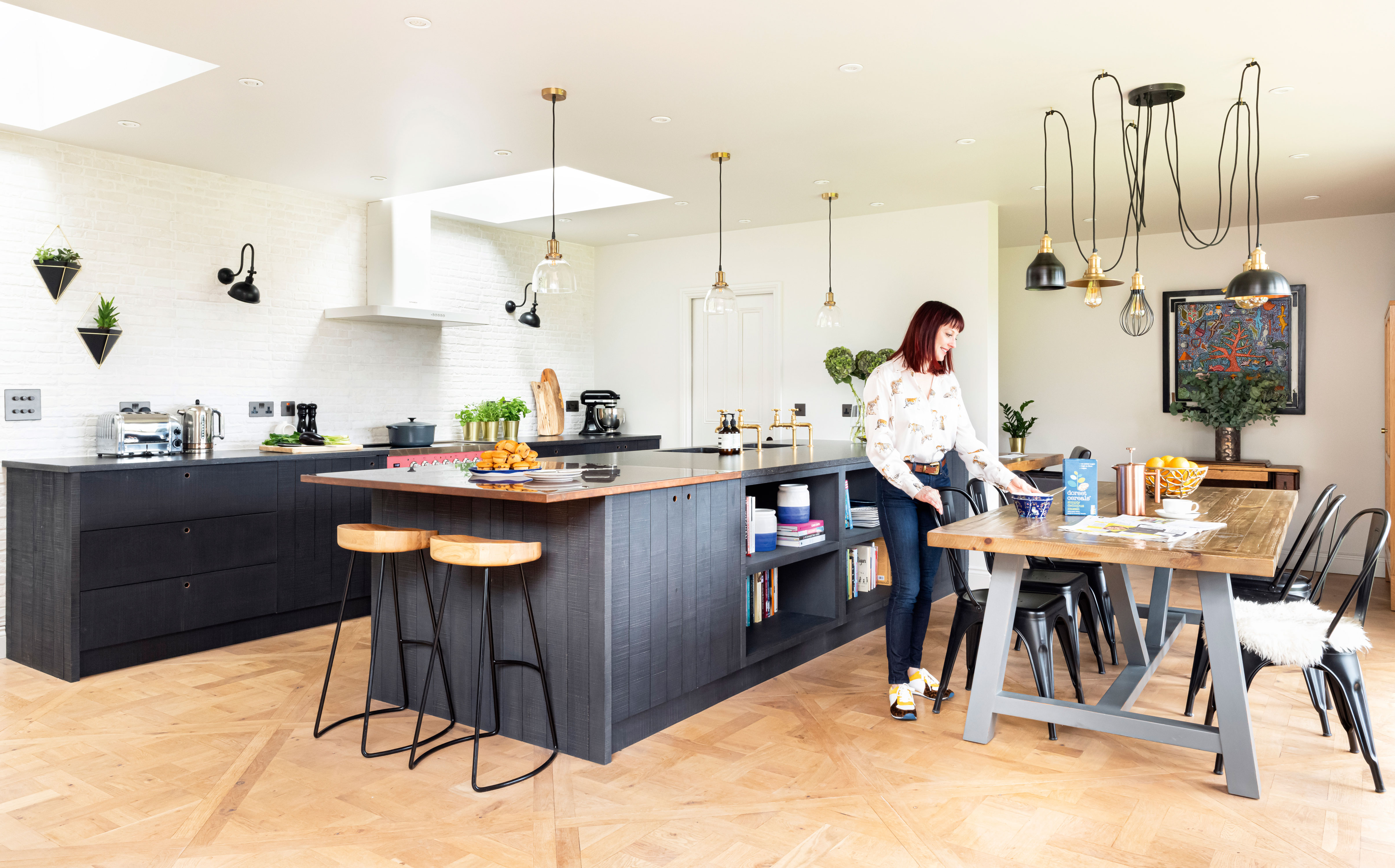

The correct kitchen island size is key if the room is to function as it should and make food preparation and cooking efficient and safe. An island that’s too big can impede the flow around the room, or not prove as useful as it should, while one that’s too small can spoil your kitchen's style, and compromise its utility.
Your kitchen island ideas might make it an additional working area for the room, a place for the family to eat, or a feature where visitors gather, but whatever functions it fulfills, kitchen island dimensions are crucial to a great remodel.
We’ve asked the experts to share exactly what you need to know about calculating for your kitchen island size to ensure optimum style and function in this very important space.
Kitchen island size: the essentials
If an island is on your list of kitchen ideas, be mindful that it does require a relatively generous space. Is there a standard size you should aim for? The answer is no.
‘There really isn’t a typical island size because you are fitting each island to each particular kitchen keeping in mind the clearances allowed that let people walk around and open cabinets and appliances,’ explains Amber Carfield, lead designer at Scottsdale kitchen remodeler Kitchens by Good Guys. ‘A kitchen island should be custom built so there really isn’t a one-size-fits-all island.’
However, although there isn’t a standard kitchen island size, there is a kitchen island average size and this is 40 by 80 inches (around 1 by 2 metres).
A vital factor in a successful design is the space around the island. ‘I always make sure there’s at least 36 to 48 inches around the island for accessibility and maneuverability around the kitchen,’ says architect Jenn Smith. ‘Anything less and the kitchen won’t function properly.’
Think proportion, too. ‘Kitchen islands should take up between one tenth to one fifteenth of your overall kitchen area,’ says Volodymyr Barabakh, co-founder and project director of Fortress Home. ‘You therefore generally want to err on the smaller side in comparison to your overall kitchen floor space. One fifteenth of your overall kitchen floor space is what you want ideally.’
Can your kitchen be too small for an island? ‘In most cases, you should have a kitchen of at least 150 square foot (14 square meters) to comfortably have an island,’ says Volodymyr Barabakh. Don’t despair if your room is on the small side, though. For more compact rooms small kitchen island ideas can help you get the counter space you’re hankering after.
Where to start when planning kitchen island measurements
It’s important here to consider how your island will be used, as well as following kitchen island size guidelines.
‘I always begin the kitchen design process with a series of questions to the client,’ says Barry Schneider, owner of European Kitchen Center. ‘What is your family size? What is your family dynamic? What are your cooking and dining habits? Do you entertain, and how often?
‘The answers determine the kitchen flow and the passage size around the island. Typically, the passage will range from 39 inches (at the minimum) to 48 inches. I use the deduction method, where I subtract cabinet depth and passage length from the total space to deduce the island’s size. This method works well for medium to large kitchen spaces.’
DIYing a kitchen remodel? Plan in outlets. ‘An electrical outlet must be provided every 4 feet, including on an island (with GFCI protection),’ says professional engineer and certified home inspector Mike Powell, owner/trainer at Red Flag Home Inspection. ‘If electrical is not run to the island during the construction activities, it will prove a costly situation to mitigate after construction is complete.’
How big should a kitchen island be?
We’ve talked about the kitchen space, but what else is essential to know about the size of a kitchen island? Elyse Moody, kitchen design expert at Designer Appliances agrees that its proportions depend on the size of your kitchen, but she adds that also important is ‘whether you intend to use your island for prep only or as a seating area.’
As for kitchen island depth if it's to be used as a seating area as well as for other purposes? ‘For the depth, standard cabinets are 24 inches deep, so at a minimum, islands should be 42 to 48 inches deep. This allows for plenty of leg room and creates ample comfort while sitting at the island,’ says architect Jenn Smith
There’s another consideration that’s often missed in thinking about kitchen island size. ‘Many people dream of having a large kitchen island, but they fail to consider the maximum size that their countertop material comes in,’ explains architect Mona Ying Reeves, founder of Kickstart House.
‘Exceeding a standard size or length could add substantial cost to your island. Solid slabs often max out at 8 to 10 feet (2.4 to 3m) depending on the material, and butcher blocks are limited as well due to production and transportation constraints,’ she says.
Combing slabs can also create problems with seams. ‘Depending on the pattern, it may be really obvious where the seam is located and sometimes it’s barely noticeable. It all depends on the countertop color and pattern, plus the skill of the installer,’ explains Jenn Smith.
What’s important for a big kitchen island design?
As we’ve discussed above, a large kitchen island design needs to take into account the slab size available for your chosen kitchen countertop. But if your kitchen is really large, it’s not only the countertop material’s length that should be considered.
‘Almost any kitchen island will naturally be proportional to the space, as the size is typically dictated by three sides of base and wall cabinets which will determine the length of the center island,’ says Jay Kallos, senior vice president of architecture at Ashton Woods.
‘If you have a really wide space where this guidance isn’t present, your guiding factors are what works aesthetically and ergonomically in the space. This might be an instance where two square islands in line work best by providing access at the midpoint of what would be an island big enough to park a car on without the break. For an extra deep kitchen, two parallel islands work really well, allowing one to be a “working” island and the other left to dining, studying or partying.’
Be sure to think about practicalities as well. ‘Your island shouldn’t be so wide that you can’t reach the center from both sides to clean,’ says Teri Simone, head of design for Nieu Cabinet Doors.
‘For length, it’s important to consider what the island is blocking access to. If the island is so big that you are walking a long way around to access elements of your working triangle, it’s too big.’
How much space should there be between the island and the counter?
When you’re thinking kitchen island size, the distance between the island and the counter is absolutely crucial.
‘If it’s just an island and you don’t have bar stools on one side, you need to have at least 3 feet (1m) and not more than 4 feet (1.2m) between the island and the surrounding counters or wall,’ recommends Elyse Moody.
‘If you have bar seating that traffic will flow behind, you need at least 4 feet (1.2m) of space behind the stools, between the island and the adjacent counters or walls.’
Mona Ying Reeves agrees: ‘Make sure you leave adequate walking and working room on either side. Local codes will dictate what those minimums are (typically 3 feet (1m)) and it’s good to leave more space (42 to 48 inches (1 to 1.2m)) for working areas where appliance doors open.’
How much overhang should a kitchen island have?
If your kitchen island is used as a seating area, it will need an overhang. ‘A standard counter overhang is 12 inches (30.5cm),’ says Elyse Moody. ‘Whether or not it needs support underneath depends on your countertop material.’
Jay Kallos agrees. ‘A good overhang for eating is 12 inches (30.5cm) but, as with anything, an even deeper overhang is better.’
Ben Neely, owner/president of Riverbend Homes also favors sizing up the overhang. ‘Make sure there is at least 14 inches (35.6cm) of overhang for seating,’ he recommends. ‘This should allow you to fully push any style of barstool in and for the countertop to be comfortably underneath you when eating.’
If your overhang does need support, think about where this is positioned. ‘If the overhang will have braces or corbels, plan their size and location carefully,’ says kitchen and bathroom contractor Jeremy Boulanger of Boulanger Construction. ‘They should be symmetrically spaced and be installed between seats. The overhang should extend a few inches past them, so a 16 inch (40.6cm) overhang would have 12 to 14 inch (30.5 to 35.6cm) corbels while a 12 inch (30.5cm) should not have one bigger than 10 inches (25.4cm).‘
How much space do you need for seating each person at a kitchen island?
Kitchen island size affects how many people can be comfortably seated at it. After all, everyone needs sufficient elbow room.
‘You should plan on 20 to 24 inches (50 to 60cm) for each person along an island,’ says Jeremy Boulanger. ‘So a 4 foot (1.2m) island would sit two people comfortably, etc.’
Bear in mind that if kids will generally be seated at the island, a width at the smaller end of the range should be just fine.
More space for each person won’t go amiss. ‘Make sure that there is at least 28 inches (71cm) width of space per seat,’ advises Ben Neely. ‘This allows ample space for all your family or guests to sit comfortably together and not be rubbing shoulders.’
The style of your bar stools could mean you need extra space per person. ‘At a minimum, take your stool width and add 6 inches (15cm) for spacing – and that will grow even more if your stools swivel,’ says Jay Kallos.
Don’t forget to plan kitchen island lighting if it’s to be a dining area to make it a cozy place to share food.
How wide is a kitchen island with seating?
The width of a kitchen island with seating will depend on the dimensions of your kitchen and more, and the expert advice above will give you all the numbers you need. However, we recommend that a kitchen island with seating should be at least 36 inches (90cm) wide with the overhang included.
Be mindful of practicalities when it comes to kitchen island size, though. ‘Once the island gets so deep that someone needs to climb up on the countertop to clean it, you have an island that is too big,’ says Jay Kallos.
Join our newsletter
Get small space home decor ideas, celeb inspiration, DIY tips and more, straight to your inbox!

Sarah is a freelance journalist and editor writing for websites, national newspapers, and magazines. She’s spent most of her journalistic career specialising in homes – long enough to see fridges become smart, decorating fashions embrace both minimalism and maximalism, and interiors that blur the indoor/outdoor link become a must-have. She loves testing the latest home appliances, revealing the trends in furnishings and fittings for every room, and investigating the benefits, costs and practicalities of home improvement. It's no big surprise that she likes to put what she writes about into practice, and is a serial house revamper. For Realhomes.com, Sarah reviews coffee machines and vacuum cleaners, taking them through their paces at home to give us an honest, real life review and comparison of every model.
-
 Amazon's bestselling Keurig K-Mini Coffee Maker sale is on now with 40% off — here's why 97,000 customers love it
Amazon's bestselling Keurig K-Mini Coffee Maker sale is on now with 40% off — here's why 97,000 customers love itAmazon's bestselling Keurig K-Mini Coffee Maker sale is on now and offers 40% off. Here's why we and thousands of customers love it. Plus, some alternatives
By Punteha van Terheyden Published
-
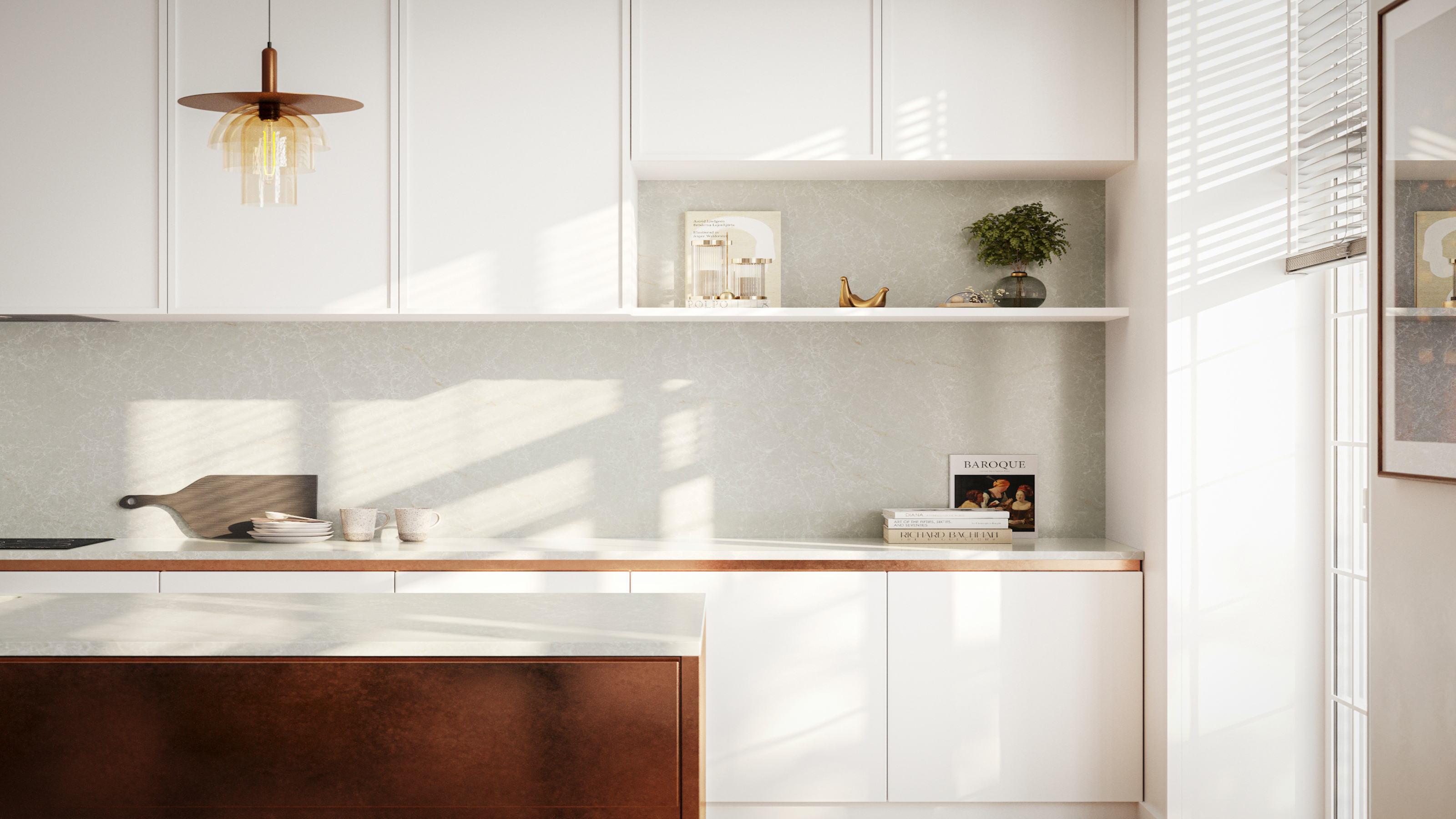 Pros reveal the 10 kitchen cabinet design mistakes to avoid, and what to do instead
Pros reveal the 10 kitchen cabinet design mistakes to avoid, and what to do insteadThe 10 common kitchen cabinet design mistakes when choosing and installing kitchen cabinets. Solutions to problems and how to avoid the issues.
By Isabella Charlesworth Published
-
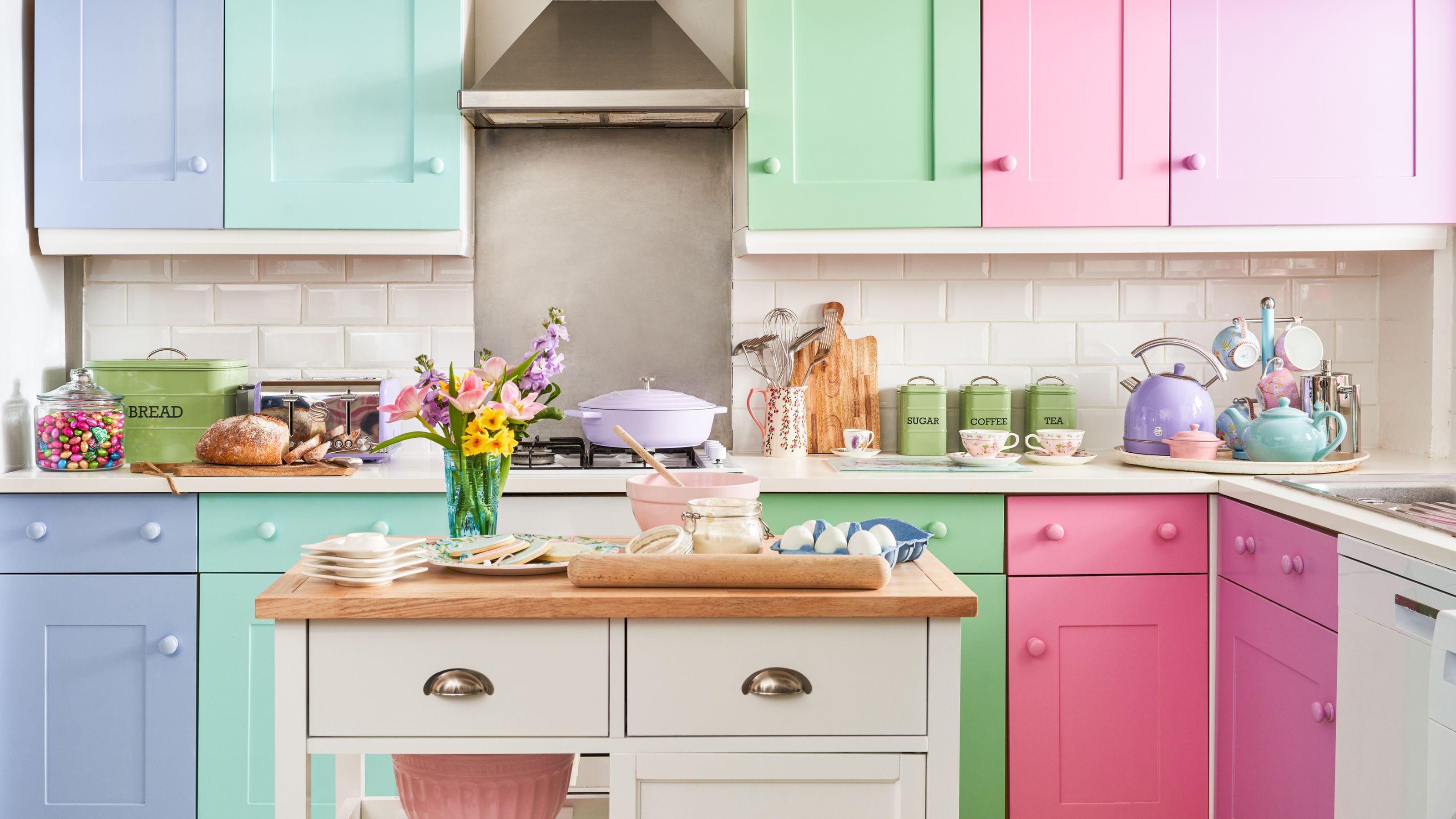 10 pretty pastel kitchen ideas that are utterly dreamy and delicious
10 pretty pastel kitchen ideas that are utterly dreamy and deliciousIce cream sweet pastel kitchen ideas are perfect for adding playfulness. We've asked designers for their favorite ways to bring these in light shades
By Eve Smallman Published
-
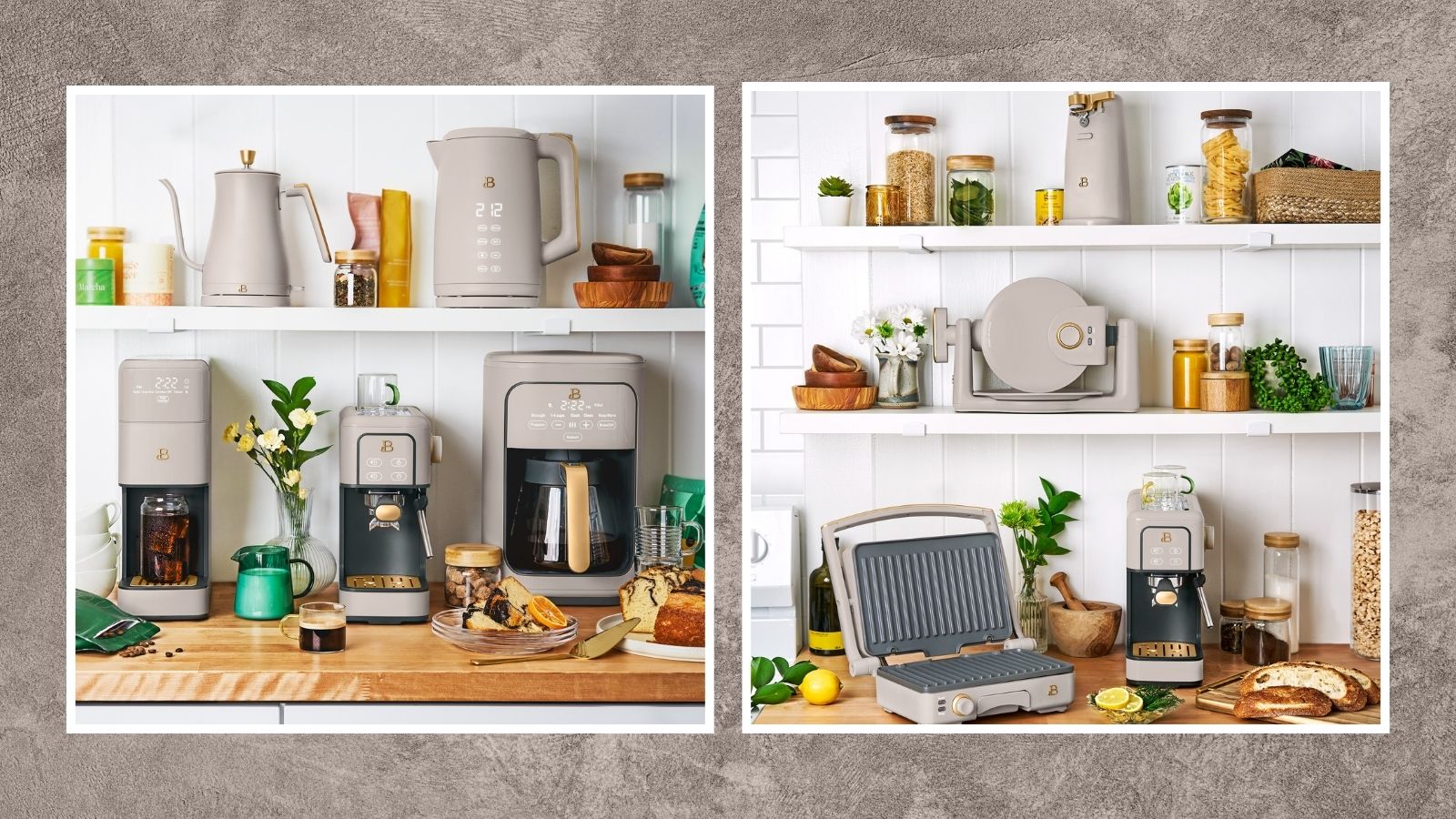 New Beautiful by Drew Barrymore kitchen appliances just dropped, and they'll take your brunch game to new levels
New Beautiful by Drew Barrymore kitchen appliances just dropped, and they'll take your brunch game to new levelsNew Beautiful by Drew Barrymore kitchen appliances just dropped — learn all about the waffle maker, espresso maker, electric can opener, and space-saving kitchen island
By Danielle Valente Published
-
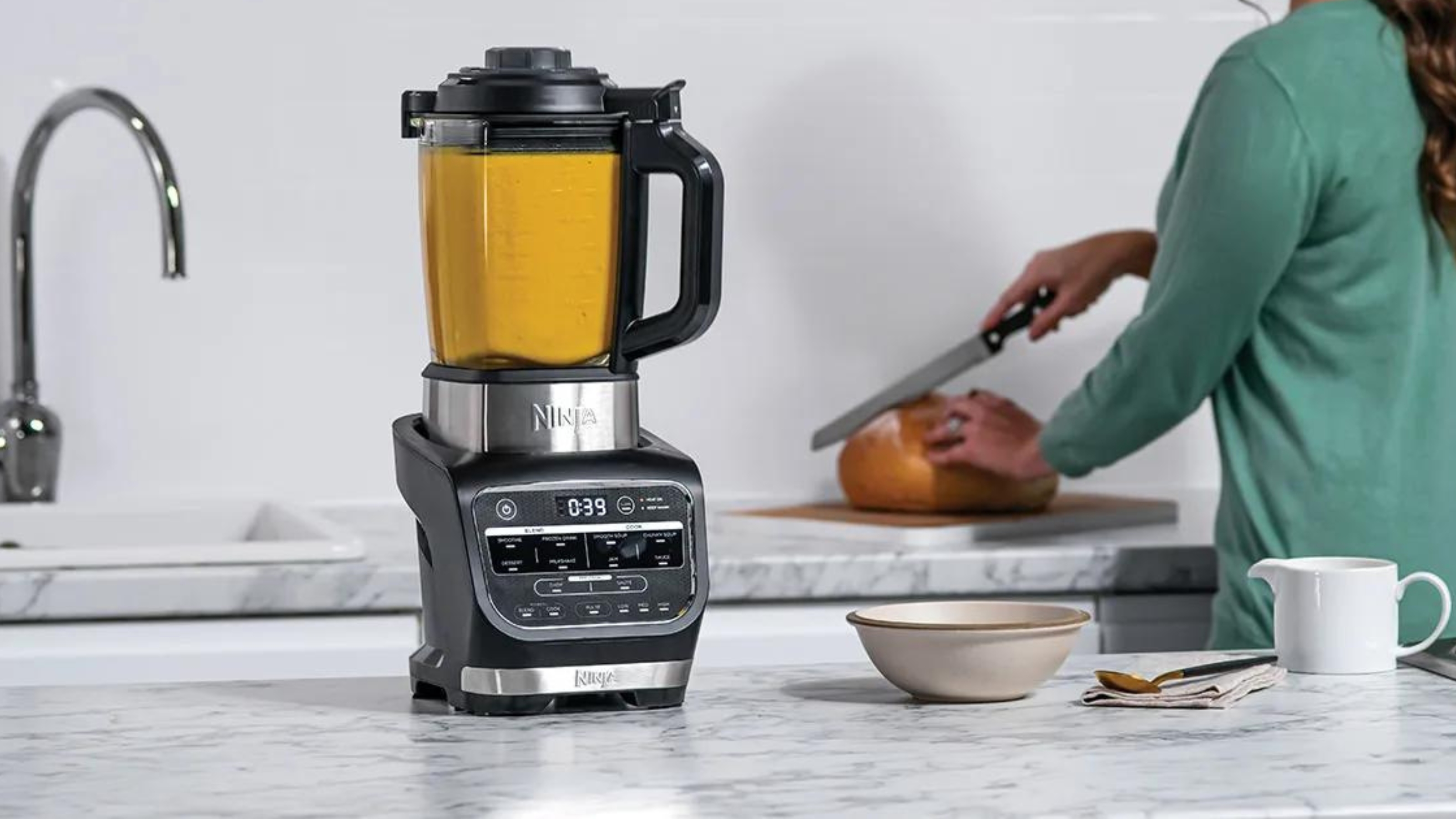
 The Ninja Foodi hot and cold blender has turned my kitchen into a fancy no-waste restaurant
The Ninja Foodi hot and cold blender has turned my kitchen into a fancy no-waste restaurantUsing the Ninja Foodi cold and hot blender, I've made hearty soups from just 65 cents per serving
By Christina Chrysostomou Published
-
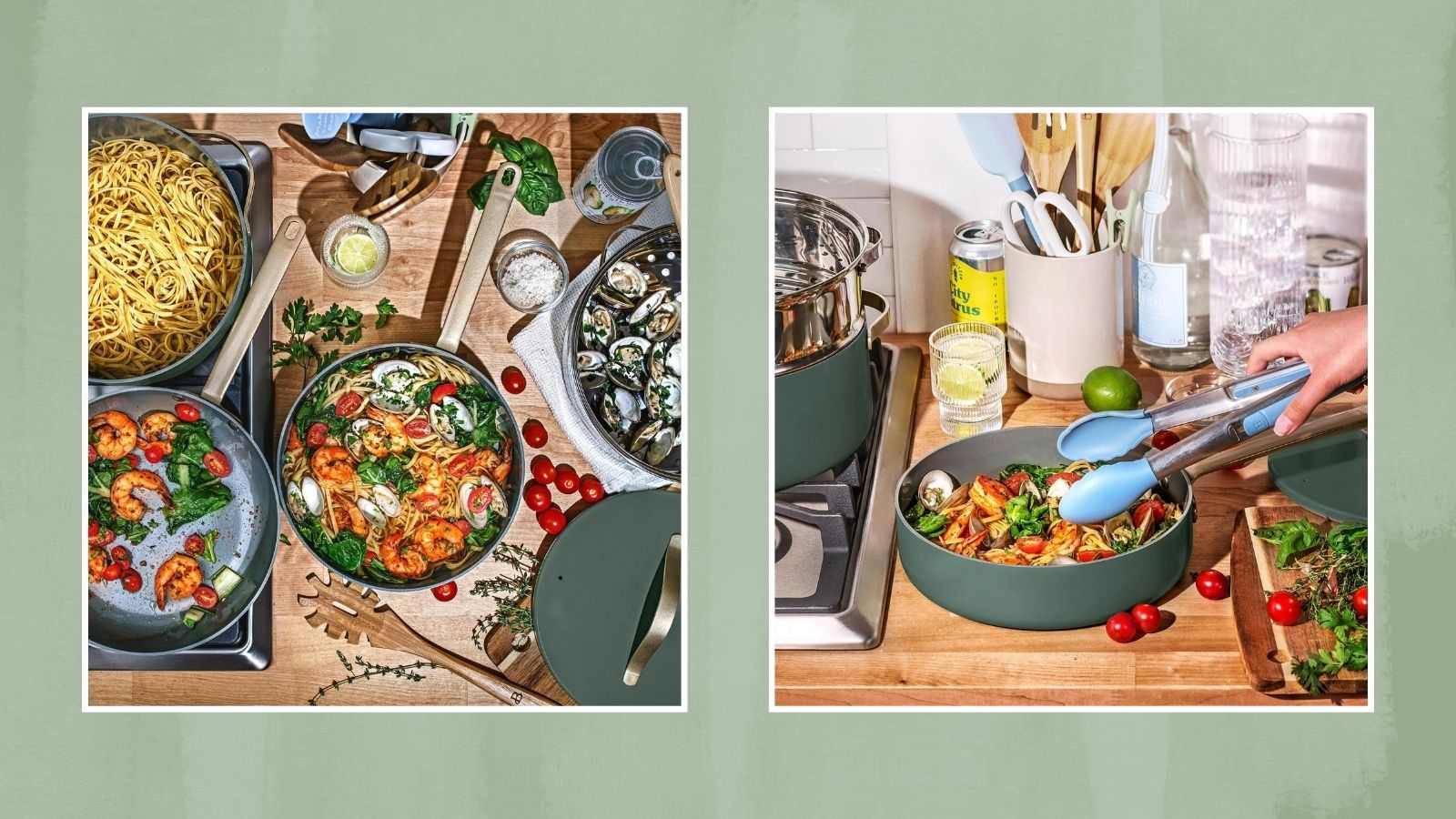 Drew Barrymore drops a new color in her Beautiful kitchen line just in 'thyme' for the holidays
Drew Barrymore drops a new color in her Beautiful kitchen line just in 'thyme' for the holidaysCheck out our edit of the Drew Barrymore cookware set and kitchen appliances in the limited-time "thyme green"
By Danielle Valente Published
-
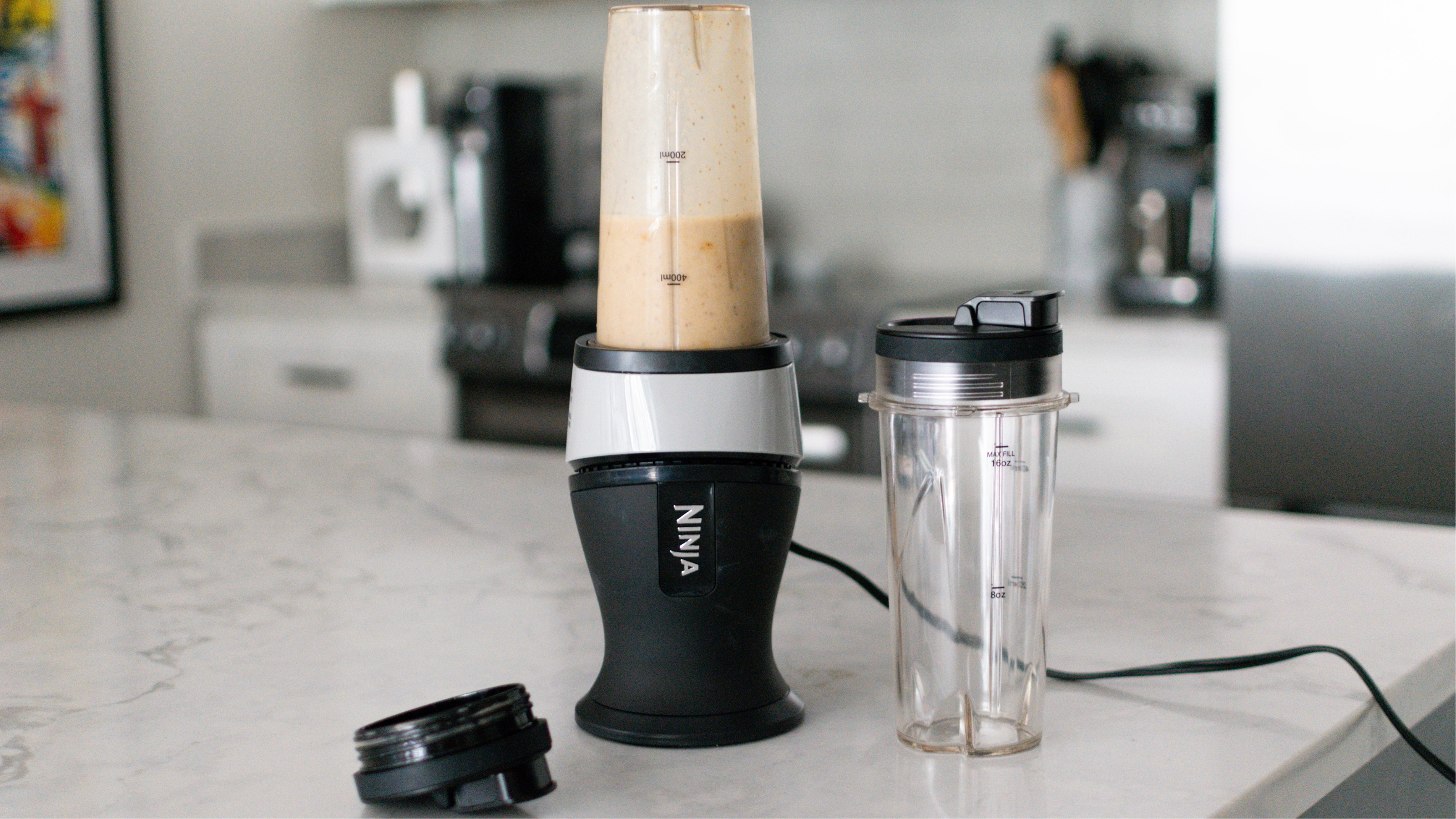
 The Ninja Fit blender is so compact that I no longer dread pulling out this type of appliance
The Ninja Fit blender is so compact that I no longer dread pulling out this type of applianceLearn more about the Ninja Fit blender in our comprehensive review after testing the kitchen gadget for several weeks and understanding all of its pros and cons.
By Heather Bien Published
-
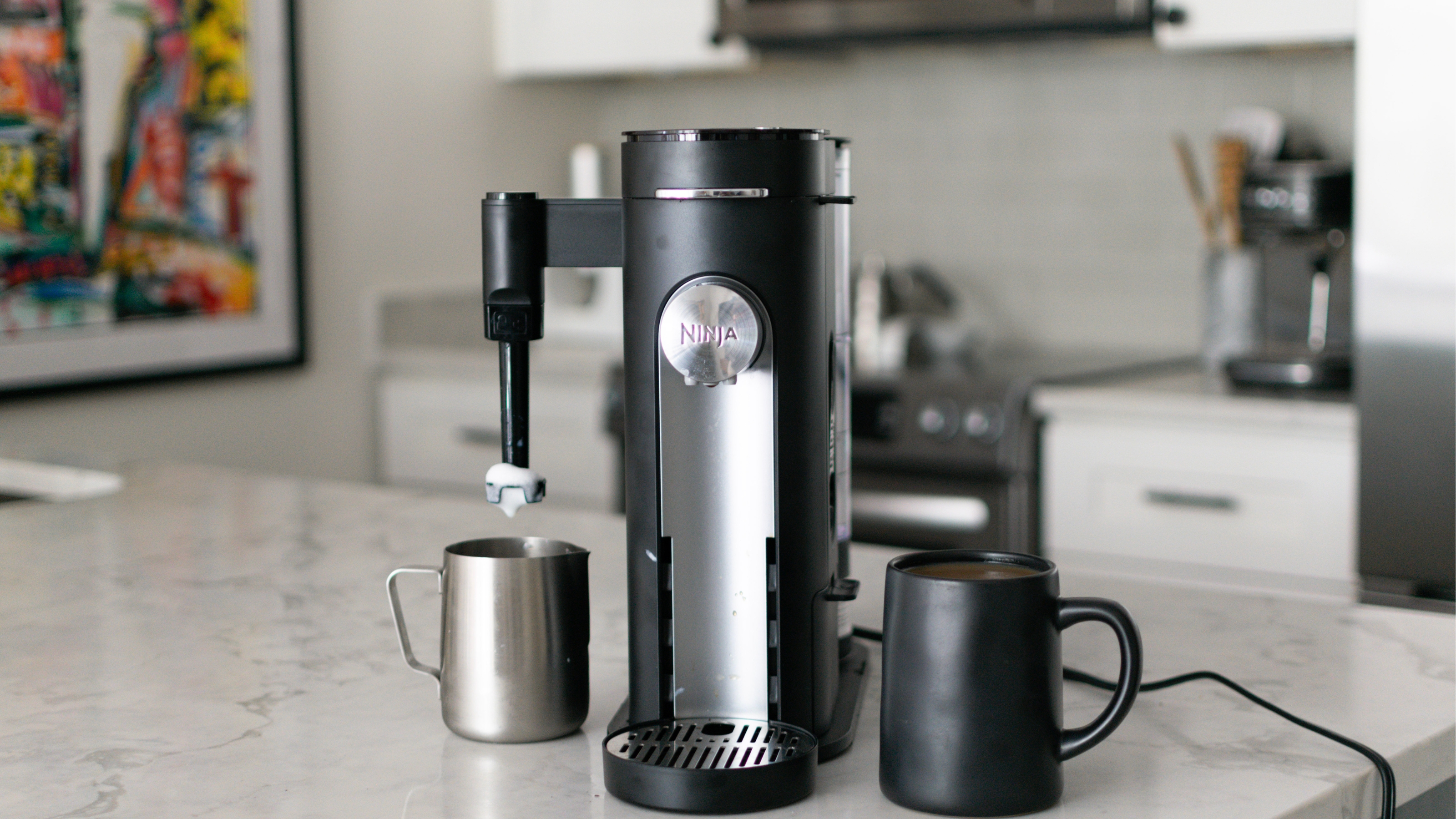
 Review: this Ninja pods and grounds coffee maker has solved our bean debate
Review: this Ninja pods and grounds coffee maker has solved our bean debateThe Ninja pods and grounds coffee maker makes everything from hot black coffee to milky brews with a frothed top and even iced drinks. See what else it's capable of in our review.
By Heather Bien Published